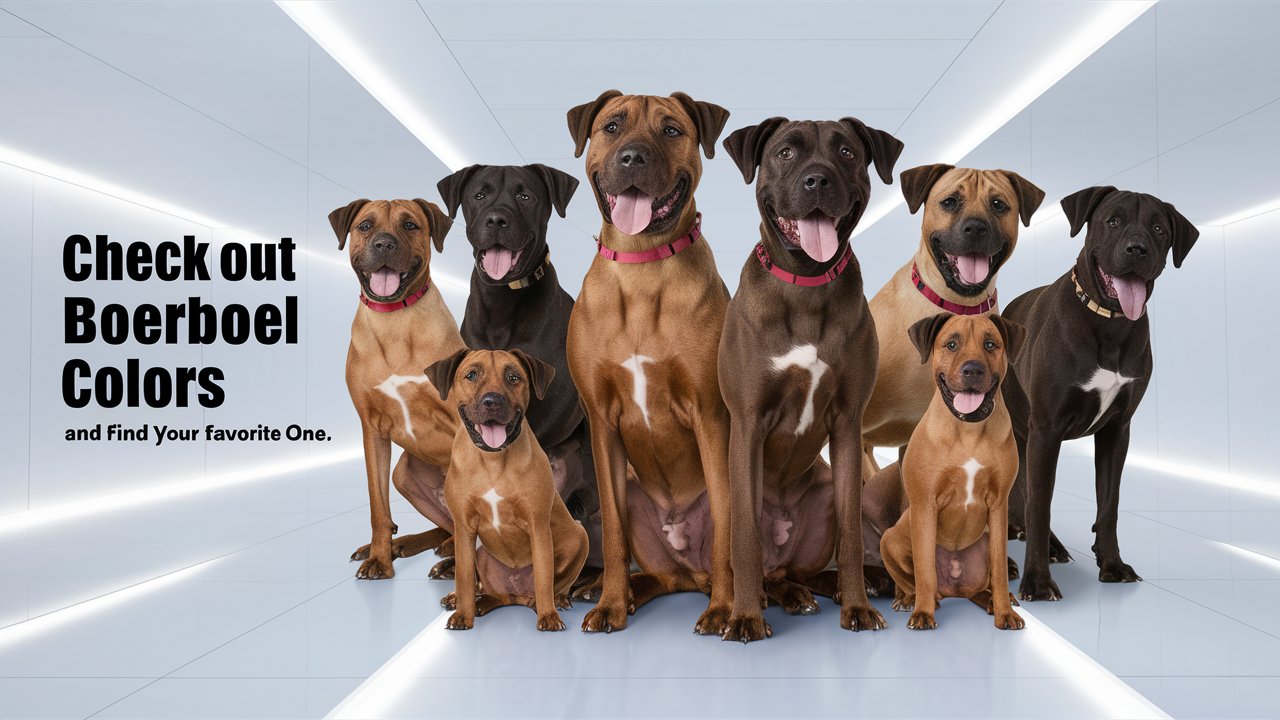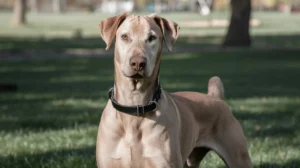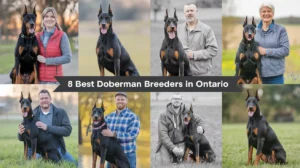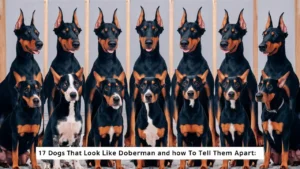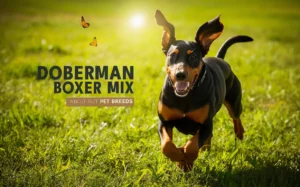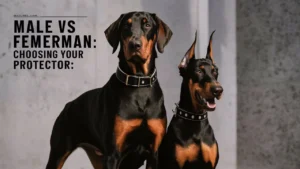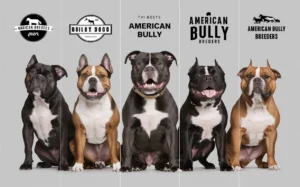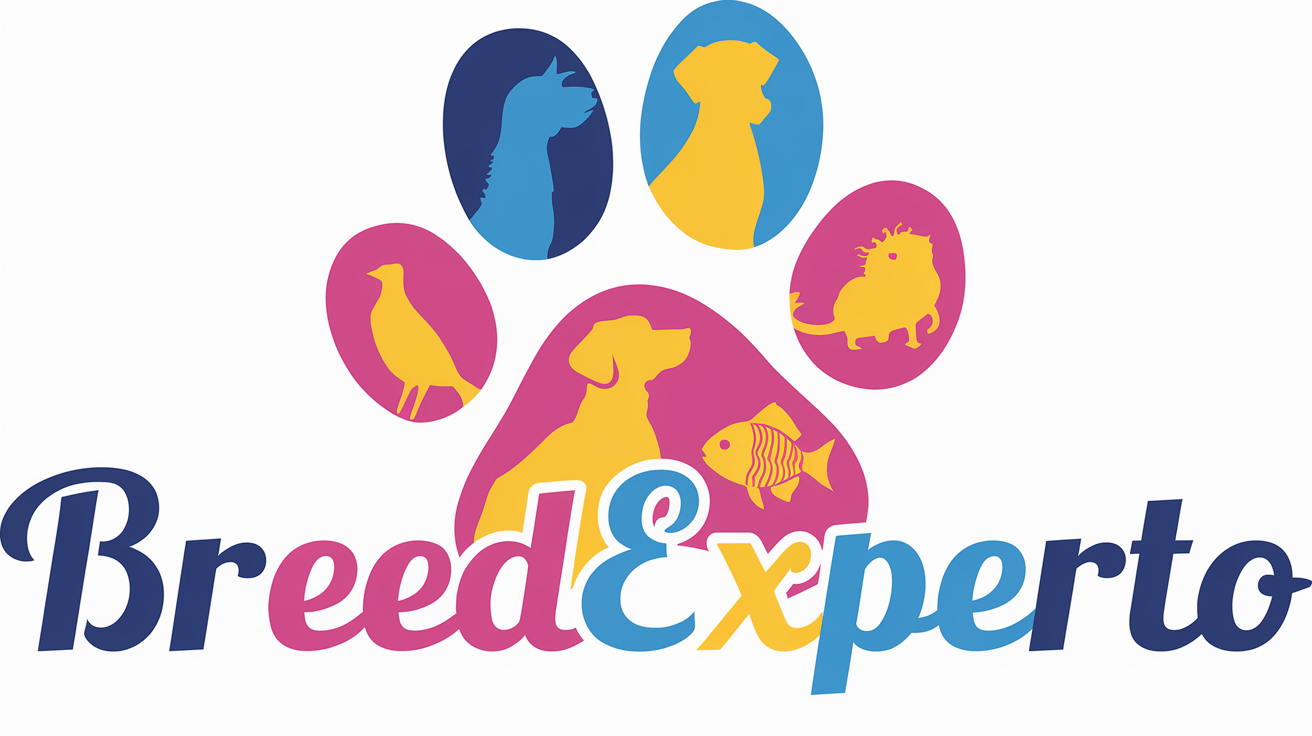The Boerboel, a powerful and protective breed, has been guarding homes and farms in South Africa for centuries.
While these majestic dogs are widely recognized for their strength and loyalty, their striking coat colors are equally captivating.
This article dives into nine recognized Boerboel colors, their genetic origins, care needs, and the markings that make each dog special. So, let’s explore the world of Boerboel coats!
Recognized Boerboel Colors
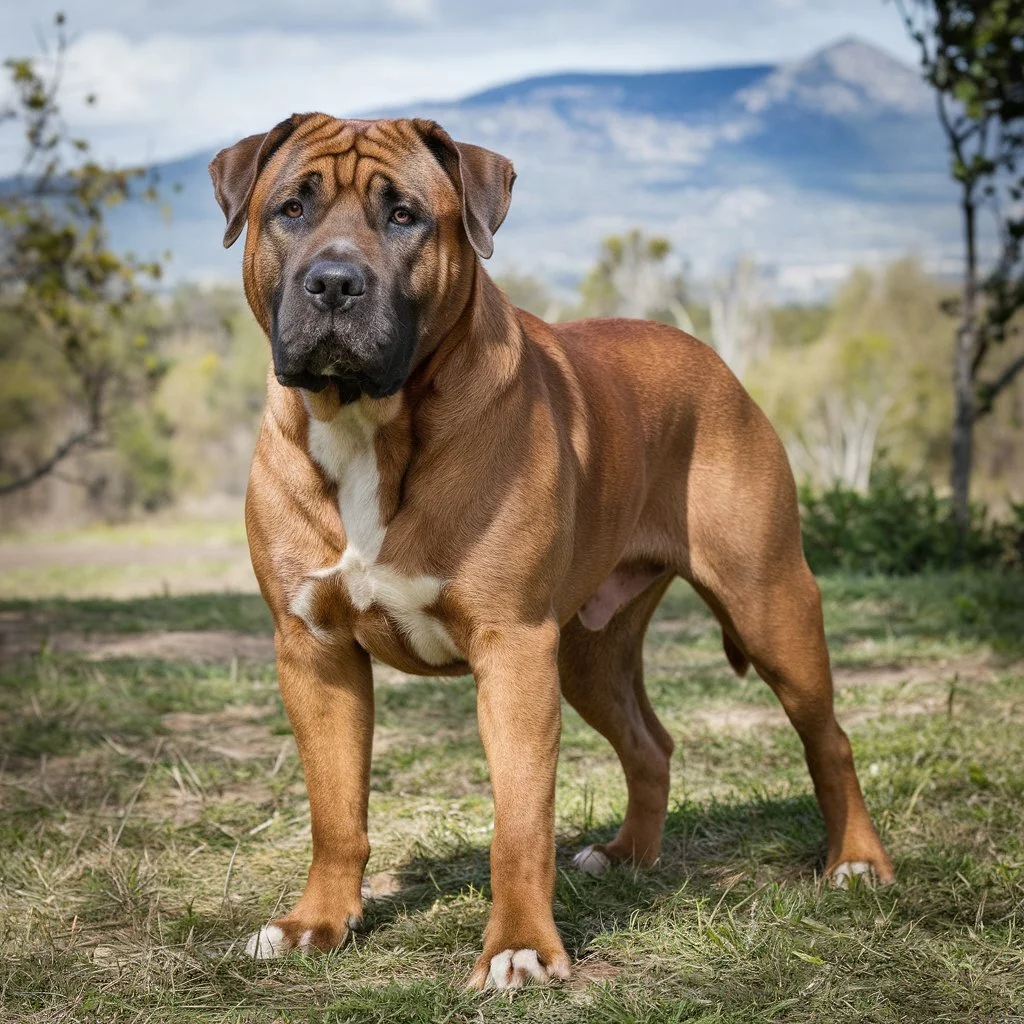
Boerboels are recognized in several coat colors, many of which are accepted by breed standards across the globe.
The variety of colors within the breed stems from genetic diversity, with some colors being more common than others. Here’s a closer look at nine recognized Boerboel colors.
Black Boerboel
The black Boerboel is a rare and striking variation. This color has caused some controversy in the breed’s history, as certain breed standards did not initially accept black as an official color.
However, black Boerboels are now recognized by many clubs and have gained popularity due to their regal and sleek appearance.
The black Boerboel typically has a solid black coat, though some may have small white markings. They exude strength and elegance, making them a favorite among those who prefer a dog with a commanding presence.
Key Traits of Black Boerboels:
- Rare and highly sought after
- Often seen with minimal white markings
- Popular for their striking, solid appearance
Brindle Boerboel
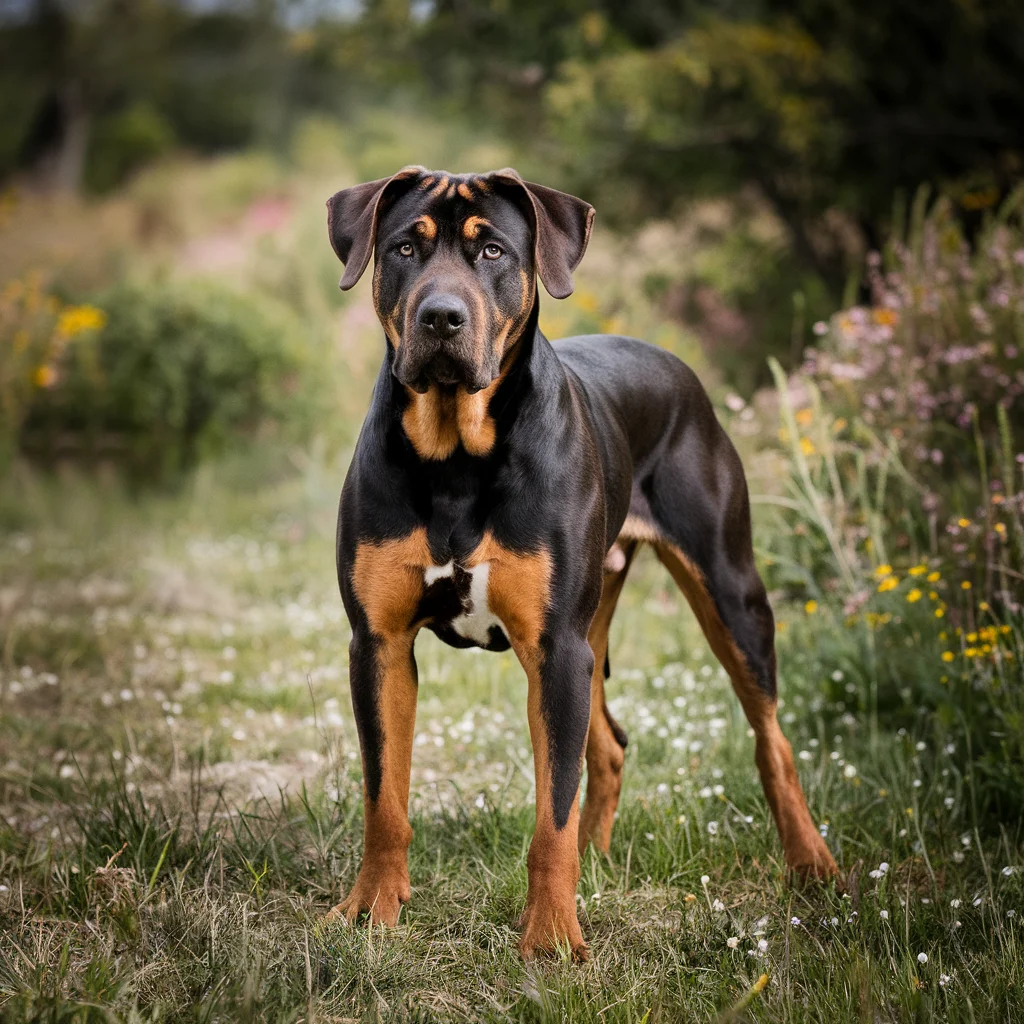
Brindle Boerboels stand out due to the beautiful striped pattern on their coats. The brindle pattern comes from a genetic trait that causes the coat to have alternating dark and light stripes, often seen in shades of brown or red.
This unique pattern adds character and depth to the Boerboel’s appearance.
Brindle is one of the oldest and most traditional colors in the breed, harking back to their heritage as working dogs. Their coat pattern not only makes them visually appealing but also helps them blend in with their environment.
Common Brindle Variations:
- Dark Brindle: More pronounced stripes with darker shades.
- Light Brindle: Subtle stripes with lighter shades of brown or fawn.
Brown Boerboel
The brown Boerboel is another common color, with hues ranging from light tan to deep chocolate. Brown Boerboels are appreciated for their classic and strong appearance.
This color can be seen in various intensities, and the richer the brown, the more desirable it often is among breeders.
A well-pigmented brown Boerboel usually has a shiny and smooth coat, which complements their muscular build. Many breeders favor brown Boerboels for their robust and healthy look.
Pigmentation Notes:
- Darker brown Boerboels are typically seen as more desirable.
- Brown pigmentation often leads to fewer skin issues compared to lighter-colored Boerboels.
Red Boerboel
Red Boerboels are prized for their rich, warm coat color. This fiery hue ranges from light auburn to deep copper and is particularly attractive in sunlight. Red Boerboels often exude energy and vitality, making them popular among active dog owners.
A red Boerboel can have a solid coat or slight variations in shade across the body. Their bold color adds to the breed’s overall powerful aesthetic and makes them stand out in any environment.
Fun Fact:
- Red Boerboels are often associated with protective temperaments, which is fitting for their role as guardians.
Fawn Boerboel
The fawn Boerboel is one of the more common colors within the breed. Their coats can range from light cream to a more golden tan.
Fawn Boerboels are known for their understated elegance and their ability to blend into different surroundings, which is why they were often favored on South African farms.
This color is ideal for those who prefer a lighter-colored dog that still maintains the breed’s powerful presence. Fawn Boerboels may also have slight variations in shading, adding to their unique look.
Variations in Fawn:
- Light fawn: Nearly cream in color, offering a softer appearance.
- Dark fawn: More golden, almost bordering on light brown.
Piebald Boerboel
Piebald Boerboels are a sight to behold with their unique coat pattern. This pattern involves large patches of color, typically black, brown, or red, combined with significant white areas.
The piebald Boerboel stands out in any crowd, making them a popular choice for owners who love distinct markings.
Piebald patterns are caused by a recessive gene, which makes this coat type a bit rarer. While not as common, piebald Boerboels are just as strong and sturdy as their solid-colored counterparts.
Key Characteristics:
- Bold, contrasting patches of color
- Often has large sections of white, particularly on the chest, face, and legs
Mahogany Boerboel
Mahogany Boerboels have a deep, rich red-brown color that sets them apart from other Boerboel variations. This color exudes warmth and is highly sought after by breeders.
The mahogany coat can sometimes have slight black shading, adding depth and complexity to the dog’s appearance.
Mahogany Boerboels are known for their luxurious coats and are particularly popular in show circles. The deep red-brown hue gives them a noble and imposing look, complementing their naturally muscular build.
Cream Boerboel
The cream Boerboel is one of the rarer colors within the breed. Their light coat often has a golden undertone, making them stand out despite the simplicity of their color.
Cream Boerboels are a unique choice for owners who prefer a dog with a soft, elegant appearance.
While their coats may be light, cream Boerboels are just as robust as any other Boerboel, with the same protective instincts and loyal nature.
Grooming Tips for Cream Boerboels:
- Due to their light color, cream Boerboels may need extra care to keep their coat clean and bright.
- Regular bathing and brushing can help maintain their elegant appearance.
Chestnut Boerboel
Chestnut Boerboels feature a deep, rich brown coat that often has red undertones. This color is similar to the brown Boerboel but with more warmth and vibrancy.
Chestnut Boerboels are known for their stunning coats that glisten in the sunlight, highlighting their powerful build.
Many Boerboel enthusiasts appreciate chestnut Boerboels for their unique color that blends the strength of brown with the fiery hues of red.
Markings on Boerboel Coats
While Boerboel colors are essential for breed standards, markings also play a significant role in the breed’s appearance. Some markings are desirable, while others can disqualify a dog from being considered a purebred.
White Markings
White markings are common on Boerboels, particularly on the chest, feet, and sometimes the face. While small amounts of white are acceptable, large patches of white can disqualify a Boerboel from being shown.
Piebald Pattern
As mentioned earlier, the piebald pattern involves large patches of color, typically mixed with white. This pattern is rare and visually striking, making piebald Boerboels a unique choice.
Irish Markings
Irish markings involve a specific pattern of white on the chest, neck, and sometimes the legs. This pattern is considered acceptable, but it should not dominate the coat.
Black Mask
The black mask is a classic trait of many Boerboels, particularly those with fawn or red coats. This marking involves a darkening of the fur around the dog’s muzzle and eyes, giving them a strong and dignified appearance.
Unacceptable Boerboel Colors
While many colors are accepted in Boerboel breed standards, some colors and patterns are not considered desirable due to genetic concerns or breed purity.
Blue Boerboel
Blue Boerboels are not recognized in official breed standards. This color often results from genetic dilution, which can lead to health issues such as skin sensitivity and coat problems.
Black Boerboel Without Brindle Markings
While brindle Boerboels are accepted, a solid black Boerboel without brindle markings is often disqualified. Breed standards prefer the brindle pattern, as it is more traditional and less likely to result from improper breeding.
Black Boerboel with White Markings
A black Boerboel with white markings exceeding certain proportions is also disqualified. Large patches of white, particularly on a black coat, are seen as undesirable by breed standards.
Boerboel with More Than 30% White Markings
Any Boerboel with more than 30% white markings on its body is considered outside of breed standards. This disqualification exists to maintain the breed’s historical appearance and genetic integrity.
The Boerboel’s Coat: Care and Considerations
The Boerboel’s coat is short and dense, making it relatively easy to care for. However, certain colors may require specific grooming routines.
Grooming for Different Coat Colors
- Light-colored Boerboels (cream, fawn) may require more frequent bathing to keep their coats clean.
- Darker-colored Boerboels (black, brindle) tend to shed less visibly but still benefit from regular brushing to reduce shedding
